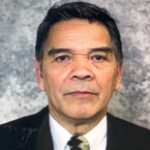Calibrating and Recalibrating
 I am bilingual. I speak, write and comprehend English and Pilipino languages. Pilipino is often referred to as Tagalog. My first years of life were spent in Manila where I was born and raised; the rest, in Toronto where I decided to live since I emigrated from the Philippines. I live longer in Toronto than the place of my birth.
I am bilingual. I speak, write and comprehend English and Pilipino languages. Pilipino is often referred to as Tagalog. My first years of life were spent in Manila where I was born and raised; the rest, in Toronto where I decided to live since I emigrated from the Philippines. I live longer in Toronto than the place of my birth.
Now, that I have gotten my background out, allow me to narrate what goes on in my mind every time I am in either country. In a nutshell, I calibrate whenever I visit my old country and recalibrate when I return to Canada. It’s like wearing my baseball cap the proper way when I’m in Canada and wearing it with the visor behind my face the minute I step into Philippine soil. Don’t get me wrong. I have fond memories of my country of birth where I was educated. And I like my adoptive country where I have lived longer than I did in my old country. It has been said that speaking two languages discourages dementia in old age and am very pleased with this observation. When you speak a language, you set your mind to the culture of the source of that language. Therefore, when I speak Canadian English, I think Canadian. And, when I speak Pilipino or Tagalog, I think Filipino.
Since my first balikbayan or trip back to the Philippines, and I’ve made quite a few after I arrived here in the 70s, I’ve noticed gradual changes in the infrastructure and landscape of Manila, now referred to as Metro Manila. Highrises now abound in Makati. What used to be an army camp providing housing to soldiers in the Philippine Armed Forces in Taguig, Metro Manila is now Bonifacio Global City with retail outlets and residential buildings. Divisoria, the Filipino’s source for everything affordable, has now expanded into several buildings, even occupying the unused main train terminal station, Tutuban, the take off point to the Bicol region in the southern part of Luzon, one of the three main provinces of the Philippines. I call that progress. However, there have been negative analyses that accompanied this progress. Philippine currency was pegged at 6.94 Philippine pesos to one Canadian dollar when I emigrated. As of of this writing, one Canadian dollar equals 38.48 Philippine peso, an increase of 82% in a period of more than 40 years when it could have held a steady conversion rate in the lower teens.To me, this translates an erosion in trust and confidence in the Philippine economy by the foreign investors. And it saddens me. But doesn’t surprise me one bit. The deposed Philippine dictator left a trail of corruption practices that has become endemic in the Philippines and has persisted since his departure and exile to Honolulu in 1986.
Over the years, my visits to the old country were mostly for pleasure. I have relatives back home and they are always happy to see me. However, I observed that with 110 million Filipinos now compared to 40 million when I left in early 70s, traffic has become a big problem in Metro Manila. Two decades ago, the government came up with an idea on what vehicles can be on the road based on the last digit of the car plates. Wealthy Filipinos merely added cars to their fleet ensuring that the plates had odd and even numbers. The Marcos era produced nouveau riche in the Philippines so it wasn’t that difficult for them when the traffic problem became an issue. They merely bought more cars justifying the purchase as a boost to the economy. Now, I like travelling in public transportation. But I found this time consuming during every visit to the old country. I had gotten used to the loose traffic in Canada, one where I can get from point A to point B in the estimated time and not getting stuck in traffic in humid weather which Manila is known for.
Filipinos are known for being resilient, the Philippines being subjected to natural calamities like typhoons, flooding, volcanic eruptions. They take every misfortune that befall them with humour. I find this admirable. In Canada, people are not used to calamities brought by Mother Nature. When Mel Lastman was mayor, he summoned the army to clear the snow after a snowstorm. Even I was surprised by this. I knew Toronto was a snow belt on my first year in Canada so I just grinned and bore it. And I survived. Filipinos are respectful and always add “po” to indicate reverence when answering a question posed by a stranger or any elderly. It’s like what Japanese do when greeting or when bidding goodbye – they bow. Young children take the hand of an elderly and put this on their forehead to show respect when greeting. Some say “Diyos po” or “Mano po” to which the older person responds by patting the head of the child. I like these old ways which have been preserved despite the hardships in the Philippines.
I like visiting the Philippines every so many years. My last visit was characterized by Covid lockdown and inability to catch a flight back to Toronto. I witnessed firsthand the suffering of the Filipinos and tried my best to help the street vendors, buying from them without bargaining. I hope and pray my old country survives this pandemic which is wreaking havoc around the world.


